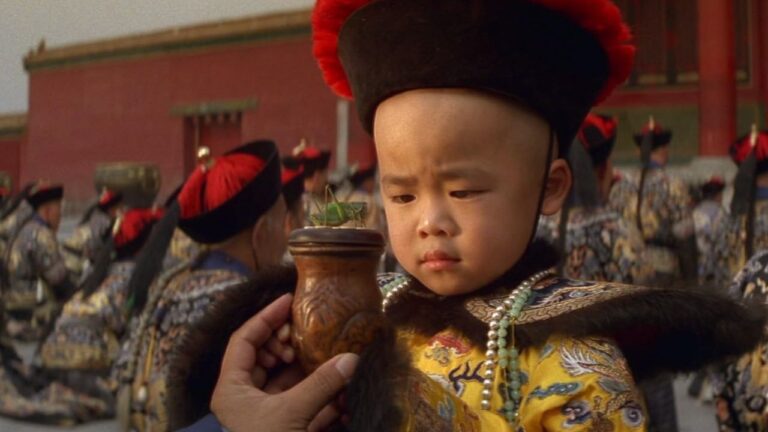Filmmakers Who Disowned Their Troubled Movies for Falling Short of Expectations

Alan Smithee. The scariest name in Hollywood.
Those looking up Alan Smithee’s name on the internet will be impressed by the twenty-plus movies credited to him, alongside countless television episodes. But the range and depth of Smithee’s career will surprise them even more. Why would one man work so long on such a wide range of projects?
The answer: Alan Smithee doesn’t exist. It’s a pseudonym often used by filmmakers and creatives who do not want credit on a project. The reasons for disowning work can range from disagreements with other creatives to studios who take over the project and change it in a way the filmmaker no longer recognizes.
Sometimes, the creators remove their names. Sometimes, they replace it with Alan Smithee or another name. Whatever the final credit, these movies don’t reflect their creators’ visions and don’t enjoy their creators’ respect.
1. An Alan Smithee Film: Burn Hollywood Burn (1997)

It should surprise no one that Alan Smithee is the credited director of An Alan Smithee Film: Burn Hollywood Burn. However, it should surprise people Arthur Hiller, director of Love Story, The Americanization of Emily, and Outrageous Fortune, actually helmed the movie.
Working from a script by Joe Eszterhas, Hiller planned to make a Hollywood satire about a director (Eric Idle of Monty Python) with the unfortunate name Alan Smithee. However, troubled production company Cinergi Pictures took away the film before Hiller could edit it, resulting in a cut that the director hated. Most who saw the movie hated it as well, which made Hiller’s decision to give Alan Smithee credit the funniest part of the movie.
2. Alien³ (1992)

Director David Fincher’s name still shows up on the opening credits for Alien³. But don’t ask him to talk about the movie. Fincher came to Hollywood after helming several hit music videos for artists such as Madonna and the Rolling Stones. Chosen for his distinctive visuals Fincher hoped to follow in the footsteps of Ridley Scott and James Cameron, who made the previous Alien films.
Instead, Fincher experienced film production at its most inefficient. Filming began without a script. The studio kept changing its mind. Fincher had a horrible time and denounced the final product. Although Alien³ tripled its budget and has a strong following among sci-fi fans, the filming process almost pushed Fincher out of Hollywood for good.
3. Heat (1995)

All movie fans know that Michael Mann directed Heat, the Los Angeles-based crime epic that put Robert De Niro and Al Pacino together on screen for the first time. Heat stands as one of the greatest crime movies ever made, a distillation of Mann’s “man makes a hard decision” aesthetic, with great late-period performances from the leads.
However, anyone who catches the edited version of Heat on television won’t find Mann’s name. Instead, that film was directed by Alan Smithee. Mann did not like the edited version that cut down on language and violence and thus distanced himself from the final project. Mann did the same thing for his 1999 movie The Insider, letting Smithee take the credit he didn’t want.
4. The Guardian (1990)

Even though he made one of the all-time greatest horror movies with The Exorcist, William Friedkin did not often work in that spooky genre. So one would expect his first return to horror with 1990’s The Guardian to receive a great deal of fanfare. Instead, The Guardian met with poor reviews, as audiences rejected its unpleasant story about a magical nanny who threatens to undo a young family.
Several issues resulted in the uneven picture, including production disruptions and a lackluster cast. While the film flopped in theaters, it did find a home on cable, perhaps the ideal setting for its base thrills. But Friedkin doesn’t want anything to do with that version, removing his name from the TV cut and replacing it with the classy “Alan Von Smithee.”
5. The Nutt House (1992)

Before Friedkin joined the production of The Guardian, Sam Raimi planned to direct. However, Raimi left the project to work on his superhero riff, Darkman. In the meantime, Raimi produced a script that he co-wrote with his brother Ivan and his old pal Bruce Campbell, a slapstick comedy called The Nutt House.
Scott Spiegel, co-writer of Raimi’s masterpiece Evil Dead II, started as the director of The Nutt House, but producer Brad Wyman intervened and replaced him with bland movie veteran Adam Rifkin. The resulting film disappointed everyone, especially the Raimis and Campbell. Campbell took the name R.O.C. Sandstorm for his credit, while Ivan Raimi is Alan Smithee Sr. and Sam Raimi is Alan Smithee Jr.
6. Dune (1984)

Every David Lynch fan points to Dune as the outlier in his odd-ball filmography. Where the rest of his movies feature surreal stories with earnest characters and terrifying imagery, Dune goes for space opera. Yet, even the most disappointed Lynch fan recognizes some aspects of the filmmaker’s personal touch, such as the fantastic visions and some of his regular actors. While Lynch doesn’t feel much pride toward Dune, he does still claim it as his.
Unless Dune plays on TV, that is. When Dune appeared as an extended edit, with upsetting elements taken out but substandard material inserted in, Lynch wanted nothing to do with the film. The directing credit goes to Alan Smithee and, in place of Lynch’s writing credit, is the traitorous name Judas Booth.
7. Twilight Zone: The Movie (1983)

Produced by Steven Spielberg, Twilight Zone: The Movie was intended as a loving homage to the 60s television classic. Spielberg rounded up some of his favorite directors, including Joe Dante and George Miller, to remake tales from the series and put them on the big screen. The quality of the shorts varies, with Spielberg’s schmaltzy segment “Kick the Can” disappointing most.
But the most infamous segment is the first, directed by John Landis. Working around 2 a.m. and in violation of child labor laws, a helicopter stunt went wrong, killing veteran actor Vic Morrow and young actors Myca Dinh Le and Renee Shin-Yi Chen. The horrible incident didn’t prevent Twilight Zone from coming to theaters or keep Landis from continuing his career. However, Second Assistant Director Anderson House removed his name from the film and replaced it with Alan Smithee.
8. Supernova (2000)

Walter Hill knows how to direct a solid genre flick, as shown in classics such as 48 Hrs. and The Warriors. Furthermore, Hill has shepherded the Alien franchise, making key contributions to the legendary series. In short, Hill has earned plenty of trust, even when a shoot seems troubled.
But that did not stop Francis Ford Coppola and Jack Sholder from stepping in and taking over the production of Hill’s 2000 movie Supernova. After audiences hated a test screening, the studio MGM kicked Hill off the project, first replacing him with Sholder and then letting Coppola try something. The final film bombed in theaters, but none of those directors’ names appeared in the credits. Instead, the blame fell on a made-up person called Thomas Lee.
9. Brazil (1985)

Monty Python alumn Terry Gilliam has never had the easiest time in Hollywood, so why should his masterpiece be any different? Brazil stars Jonathan Pryce as a company man stuck in dull, fascist England. His sole escape comes through his fantasies and his romance with an exciting American woman (Kim Greist), who may or may not be a terrorist.
Audacious, funny, and humane, Brazil still feels like a miracle, something that shouldn’t exist. And if studio Universal Pictures had its way, it wouldn’t. Universal hated the downbeat ending and re-edited a happier version dubbed the “Love Conquers All” cut.
Gilliam disowned this cut and fought to have his version released, which eventually did happen. One can still find the “Love Conquers All” cut on some home video releases, and Gilliam’s name appears on it. Just don’t ask him what he thinks of it.
10. The Magnificent Ambersons (1942)

Orson Welles redefined cinema with his debut picture, Citizen Kane. If he had his way, his follow-up, The Magnificent Ambersons, would have done the same. While Welles and editor Robert Wise worked to trim down the movie, in response to negative reactions from test audiences, studio RKO interceded and made their own cuts, resulting in a very different film than the one intended by the director.
Welles’s name still appears on the finished product, but the director never claimed it as his. Worse, the studio destroyed deleted footage, making a restoration to match Welles’s plans impossible. In the 70s, Welles thought about shooting new material to serve as a proper ending, but that never came to pass, leaving The Magnificent Ambersons as a disappointment that isn’t a real Welles film.
11. Fantastic Four (2015)

Every adaptation has its changes to the source material, but Fantastic Four feels like an exceptional case.
Where the original comics by Jack Kirby and Stan Lee bristle with imagination and Kennedy-era imagination, 2015’s Fantastic Four is a dire, cynical film, full of body horror and unpleasant characters. Initial writer Jeremy Slater, who would go on to make Moon Knight for Marvel, and his first script had all the gee-whiz action of the comics. Director Josh Trank subsequently nixed that approach.
Trank doesn’t deny those allegations, but he doesn’t claim the movie that fans saw. The day that it hit movie screens, Trank took to social media to boast about the great film that he made, lamenting that fans will “probably never see it.” Trank’s name still appears in the credits of Fantastic Four, but he has removed it from his filmography, insisting that it doesn’t belong to him.
12. Student Bodies (1981)

Most moviegoers haven’t heard of Student Bodies, but the 1981 release remains a favorite among horror comedy fans. The film skewers the nascent slasher subgenre with wry, knowing humor. Student Bodies follows the actions of a killer called the Breather, named as such for his heavy Michael Myers-style respiration, provided by Law & Order mainstay Richard Belzer.
Today, it’s impossible to tell who deserves praise for Student Bodies’ sense of humor. The director and writer is listed as Mickey Rose, a comedy writer who worked often with Woody Allen. However, behind-the-scenes information suggests that producer Michael Ritchie, director of The Bad News Bears and Fletch, guided Rose and thus is the true director. Whatever happened, Ritchie has removed his name from the producer credit, replacing it with Alan Smithee.
13. Scent of a Woman (1992)

The average moviegoer may not know the name Martin Brest, but they sure know his movies. Brest directed several big hits, including Beverly Hills Cop and Meet Joe Black. Scent of the Woman remains one of his most popular films, a heart-warming story about a young prep student (Chris O’Donnell) who works as an assistant for a blind Vietnam Vet (Al Pacino).
Scent of a Woman won over audiences and critics, earning a Best Actor Oscar win for Pacino and several nominations, including Best Picture and Best Director. But when it comes to the edit used for in-flight entertainment on airplanes, Brest saw nothing worth celebrating. He removed his name from that edit and gave it to Alan Smithee instead.
14. Death of a Gunfighter (1969)

It all started with Death of a Gunfighter. Written by Joseph Calvelli, based on the novel by Lewis B. Patten, Death of a Gunfighter tells a story reminiscent of The Searchers, about an Old West hero who sees no future for himself in the modernized frontier. Robert Totten began directing the picture, but he soon clashed with star Richard Widmark.
Because Widmark had the most pull, Totten left the project, replaced by Don Seigel, with whom Widmark made Madigan. Seigel did not feel right about taking credit for the finished film and planned to give the credit to Totten. But Widmark refused and levied the Director’s Guild of America to intercede.
In the end, the credit went to a person who did not exist at all, a person whose name would become infamous in Hollywood: Alan Smithee.
15. Fade In (1968)

“It should have been called Fade Out,” star Burt Reynolds said of his Western Fade In. As that quote suggests, no one enjoyed the process of making Fade In, nor did they feel pride about the finished picture. Too many writers, an indecisive studio, and a hard-headed star resulted in a mess of a movie that no one liked.
Writer Mart Crowley managed to get his name off the film, letting Jerrold L. Ludwig take all the blame. But director Jud Taylor could not dodge the critical bullet coming his way.
That is until he heard about the resolution to a dispute on another Western Death of a Gunfighter. Although he copied the idea introduced by Widmark, Siegel, and Totten on that movie, Fade In played in theaters first, making it the first film credited to Alan Smithee.
16. American History X (1998)

Edward Norton is one of the most exciting actors working today, a unique talent who has captured the attention of audiences since his break out in the thriller Primal Fear.
Norton also has the reputation as a very hands-on actor, who likes to rewrite lines and even direct some scenes, whether or not the actual director wants assistance. Today, filmmakers know what they’re getting when they hire Norton, but that wasn’t the case in the mid-90s when Tony Kaye took on American History X.
Written by David McKenna, American History X stars Norton as a former hate-crime terrorist who reforms while in prison and struggles to keep his younger brother from following in his steps. No one can deny that Norton gives a captivating performance as the one-time bigot. But for Kaye, his on-screen work didn’t justify his behind-the-scenes meddling. The studio preferred Norton’s edits, which ended up going to the theater. Kaye did not, and although he still has the prime credit, he doesn’t consider the movie his.
17. Dream House (2011)

Sometimes, a director can’t take his name off of a project. That’s what Jim Sheridan discovered when he expressed his disappointment with Dream House, a creepy thriller starring Daniel Craig, Rachel Weisz, and Naomi Watts. Sheridan and studio Morgan Creek butted heads throughout the entire filming process, as the two disagreed on the movie’s tone.
As expected, Morgan Creek didn’t let Sheridan have the final cut. Worse, the advertising campaign gave away the final twist. Yet, Morgan Creek also didn’t let Sheridan remove his name from the finished film. When Sheridan went to the Directors Guild of America to have his name replaced with Alan Smithee, Morgan Creek interceded, and the Guild ruled against Sheridan. So, while Dream House still credits Sheridan as director, he doesn’t recognize the movie as his creation.
18. Woman Wanted (1999)

The son of a New Hollywood legend, Kiefer Sutherland has a long history of starring in great movies and television series. He even had a few turns in the director’s chair before taking on Woman Wanted, an adaptation of the novel by Joanna Glass.
Thanks to his connections, Sutherland had the pull to recruit some top-level talent for his film, including Holly Hunter, Michael Moriarty, and his mother Shirley Douglas. Together, they created a solid indie drama, good enough to win awards at a few regional film festivals. Despite its positive qualities, Woman Wanted disappointed Sutherland. He let Alan Smithee take credit for the final film and went on to other, more successful endeavors.
19. Hellraiser: Bloodline (1996)

The last of the Hellraiser movies to receive a theatrical release, Hellraiser: Bloodline has a mixed reception among horror fans. Some enjoy the film’s audacious plot and unique take on the series’ central monsters, the Cenobites. Others believe the cheesy scenes set in the far future undermine the sensual terror of the original Clive Barker novel The Hellbound Heart.
One person who has no mixed feelings about Hellraiser: Bloodline is its director, legendary makeup artist Kevin Yagher. Yagher wanted a more psychological horror film, in line with Barker’s intentions. Despite a troubled shoot, Yagher and his co-creators achieved that goal. But studio Miramax disagreed and wanted a more traditional slasher, with Pinhead (Doug Bradley) acting more like Freddy Krueger than the amoral figure Barker imagined.
Miramax brought in Joe Chappelle to do reshoots and Yagher hated the new movie, compelling him to remove his name and replace it with Alan Smithee instead.
20. Highball (1997)

Noah Baumbach is one half of the most interesting creative teams in modern Hollywood. In addition to working with Wes Anderson, he has written and directed movies such as Marriage Story and White Noise. Along with his wife Greta Gerwig, Baumbach co-wrote the hit movie Barbie. In short, Baumbach’s career followed an unusual trajectory.
That trajectory didn’t always have pleasant results. After shooting his second feature, Baumbach and his co-writers Carlos Jacott and Christopher Reed used the leftover financing to shoot a quick lark called Highball. Baumbach starred himself, alongside Justine Bateman and fellow director Peter Bogdanovich. Baumbach never had the opportunity to assemble the footage into a proper movie and abandoned the project.
However, the producers did put the film together, releasing it as Highball. An irritated Baumbach replaced his name with Ernie Fusco as director and Jesse Carter as the writer.
21. Catchfire (1990)

Dennis Hopper made his directorial debut with Easy Rider, one of the most important entries in the New Hollywood movement. But a variety of issues, ranging from funding to substance abuse, plagued his follow-up feature The Last Movie in 1971. Thus, Hopper’s directing career has several ups and downs, none worse than the steamy thriller Catchfire.
Catchfire stars Jodie Foster as an artist who goes on the run after witnessing a mob murder and is hunted by hitman Milo (Hopper). Hopper and Foster agreed on almost nothing throughout the shoot, resulting in a film that pleased no one. Hopper replaced his name with Alan Smithee for the released movie but did make a director’s cut in 1992, called Backtrack.
22. Accidental Love (2015)

David O. Russell has become a director infamous for his messy movies. Sometimes, that mess appears on screen, as in the 2021 catastrophe Amsterdam. Others, the messes occur behind the scenes, as in the altercations that Russell has had with stars such as George Clooney and Lily Tomlin. Even by that standard, the healthcare satire Accidental Love is a mess.
Accidental Love began life as Nailed, a satire starring Jessica Biel as a waitress whose personality changes after getting a nail stuck in her head. Russell could never finish the project, which also featured Jake Gyllenhaal and Paul Rubens, and abandoned it in 2008.
Seven years later, the studio put together a version and released it as Accidental Love. Russell removed his name from the movie but didn’t choose Alan Smithee as a pseudonym. Instead, credit on Accidental Love goes to Stephen Greene, a person who does not exist and thus need not feel embarrassed by the terrible film.





